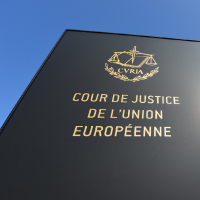
Regionalism and European integration have steadily transformed the nature of national state and territorial politics across the members of the EU. The world’s economic order has changed radically through the combined effects of globalisation in capital flows, the muscle of multinational corporations, and extensive technology transfer. The collapse of the Iron Curtain following the Velvet Revolutions in Eastern Europe unleashed unsavoury elements of nationalism while in Western Europe, regionalism, nationalism and separatism have been given a boost. Concurrently, intergovernmental relations between EU members were strengthened considerably with the creation of the Single Market and Euro, not least because their implementation and consequences demanded concerted action by, and imposed restrictions on, national governments. Relations today seem to be weakening though, with a couple of member states wanting to opt out completely of the Euro and other general consensus of some member states is that the EU is bringing them down at this period of financial crisis.
Together, these developments have fashioned a distinctive European political space, meriting being styled MLG.
Although not a theory to explain European integration and its development over the years, MLG is a highly descriptive conceptual model useful for explaining Europe’s new governmental architecture. Thus, for many commentators, the situation within the EU illustrates MLG in practice.
Marks G. et al contended that EU policy is produced by a complex web of interconnected institutions at the supranational, national subnational levels of government and that the locus of political control within states has shifted. A variety of channels and interconnections exist between different levels of government – supra, national and sub. No longer is there an unambiguous separation of domestic and international policies.
Territorial and functional constituencies are overlapping and variable. Underpinning the outplay of MLG in the EU is the rather elusive principle of ‘subsidiarity’, essentially, that decisions made at the lowest possible level consistent/commensurate with them being effective (Philipart and SieDhian Ho).
However, operationalising the term subsidiarity is not straightforward and, in truth, MLG is entrenched within EU policy making.
There is not a homogenous tier of regions across Europe. That is, size, functions, and powers of regions vary from country to country and, indeed, within individual states, all of which serves to add to the growing complexity.
In terms of Member State to EU relations, Member State sovereignty has been diluted by both collective decision-making in the EU using qualified majority voting as well as the autonomous decisions of supranational EU institutions. The Centre within each Member State remains important but each has lost its respective national monopoly position. Thus, MLG conceives the EU as a post-national embryonic polity in its own right, in which power and influence are exercised at multiple levels of governance. The resulting situation – no longer fully sovereign states alongside a not yet sovereign EU.
Undeniably, the EU involves the transformation of European governance into a more federal and pluralist form. For example, in the EU budgeting process, “the delivery system developed for the structural funds is characterised by MLG, i.e., the European Commission, national governments and regional and local authorities are formally autonomous, but there is a high level of shared responsibility at each stage of the decision-making process. The relationship between these is, accordingly, one of partnership and negotiation, rather than being a hierarchical one” (Keating and Hooghe). Moreover, EU decision-making is not only by national governments but also by EU institutions and actors at other levels. Acting autonomously, the European Commission, the European Court of Justice and the European Parliament exert independent influence on EU policy process / outcomes.
Although there is no homogenous region model, the variety of sub-national governmental arrangements varies enormously across the different EU states. That said, Europeanisation has encouraged the erosion of the longstanding divide between federal and unitary states in the EU. In its place, a continuum has emerged.
Irrespective of its desirability or otherwise, as a depiction of the reality of contemporary governance in Europe, MLG is here to stay. British membership of the EU appears irrevocable, though withdrawal is always threatened.
The Opting in and opting out for policies has created a multi-track/speed Europe of variable geometry in its institutional architecture and policy transmission process. Political-juridical problems ensue such as representation, accountability and the legitimacy of decision-making. Thus, even having chosen to remain outside the Euro zone for the present, the UK remains nonetheless locked into a web of European governance. Progressive federalization seems inevitable given the inescapable logic of ever-closer union although it is a novel form of federalism that is emerging, quite distinct to current working models such as the USA (Elazar).
One additional factor that must also be remembered is that EU level changes are accompanied by the ramifications of the European Convention of Human Rights that have also encroached upon the powers of signatory states at all levels of government.
So to conclude, MLG reflects the fact that Europe has experienced a deep paradigm shift in the nature of political representation and participation as nation-states have witnessed the twin impulses of regionalisation and Europeanisation – multiple levels of government have emerged. Moreover, the very concept of separate vertical ‘tiers’ of government is being complemented and challenged by a new model of overlapping and interlocking ‘spheres’ reflecting the appearance of multiple agencies within each tier – horizontal fragmentation. However, MLG is not without problems. How tiers relate to one another in the new governmental architecture remains far from settled.
Despite the different concerns of different authors, four common strands emerge that provide a parsimonious definition of multi-level governance that raises clear hypotheses for future research. First, that decision-making at various territorial levels is characterized by the increased participation of non-state actors. Second, that the identification of discrete or nested territorial levels of decision-making is becoming more difficult in the context of complex overlapping networks. Third, that in this changing context, the role of the state is being transformed as state actors develop new strategies of coordination, steering and networking that may protect and, in some cases, enhance state autonomy. Fourth, that in this changing context, the nature of democratic accountability has been challenged and need to be rethought or at least reviewed.













